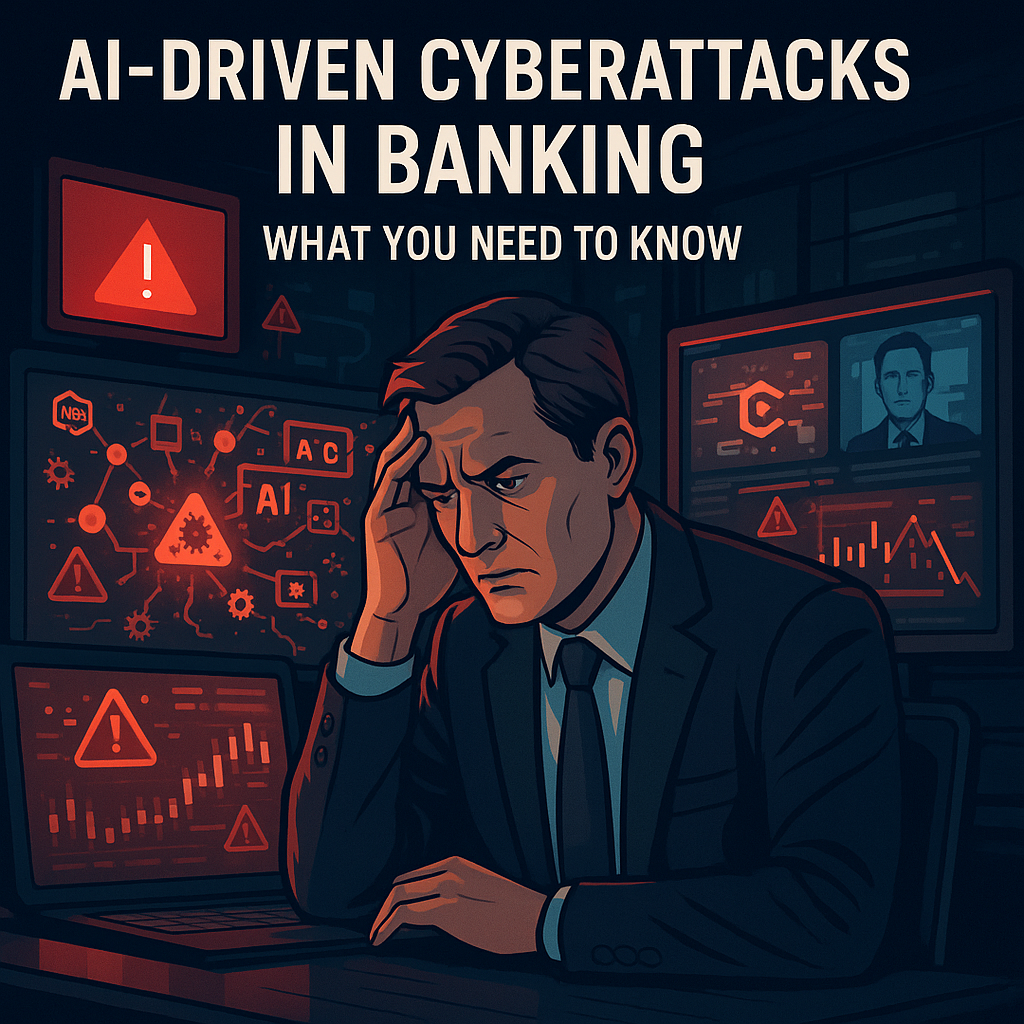As we enter the second half of 2025, AI-driven cyber threats in banking have surged to the forefront of risk discussions in boardrooms across the financial sector. With threat actors increasingly leveraging generative AI, deepfakes, and autonomous malware, traditional defense measures are no longer enough. For banks—especially mid-sized and regional institutions—the time for proactive cybersecurity transformation is now.
The Rise of AI-Powered Attacks
AI is no longer just a defensive tool—it’s now being used offensively by cybercriminals. In 2025, we’re witnessing:
- Hyper-personalized phishing campaigns using generative AI to mimic executives’ voices and writing styles
- Autonomous malware that mutates in real-time to evade detection
- Deepfake attacks targeting wire transfers, loan approvals, and identity verification systems
- AI-assisted vulnerability scanning that mimics red team behaviors at machine speed
These innovations allow attackers to scale their operations and bypass outdated perimeter defenses with unprecedented precision.
Real-World Impact: Banking Breaches Surge
According to IBM’s 2025 Cost of a Data Breach report, financial institutions now face an average breach cost of $6.1 million, with time to containment increasing due to polymorphic malware and evasive phishing tactics. A recent breach at a regional U.S. credit union exploited a deepfake video of the CEO, tricking employees into executing a fraudulent fund transfer—highlighting the growing stakes.
Compliance Pressure Compounds Risk
Simultaneously, compliance requirements are tightening. New 2025 regulatory updates include:
- Expanded GDPR enforcement and evolving U.S. state privacy laws
- Enhanced AI governance frameworks requiring bias mitigation and auditability of AI models
- Stricter anti-money laundering (AML) controls powered by AI pattern recognition
- The EU’s CSRD mandate, pushing ESG and cybersecurity reporting into executive accountability
Without automation, these frameworks strain already overstretched IT and compliance teams.
Why Traditional Security Fails in 2025
Legacy tools like signature-based antivirus, siloed monitoring platforms, and annual penetration testing are insufficient against dynamic AI-enabled threats. Banks relying on outdated infrastructure are most at risk—especially those without 24/7 SOC capabilities or zero-trust segmentation.
Proactive Solutions to Address the Threat
To keep pace, banks must modernize their cybersecurity strategy with:
1. AI-Augmented Threat Detection and Response
Deploy behavioral analytics and extended detection and response (XDR) platforms capable of learning and adapting to attacker tactics.
2. Zero Trust Architecture Implementation
Assume breach posture. Restrict lateral movement and enforce least privilege access across digital banking systems.
3. Executive Deepfake Protection
Integrate voice and video verification controls into workflows involving high-value approvals or sensitive communications.
4. Quantum-Resistant Encryption
Prepare for the long-term impact of quantum computing with quantum-safe cryptography, especially for long-lived data.
5. Compliance Automation
Use platforms that map security controls to regulatory mandates, streamlining audits, documentation, and policy updates.
Empowering Financial Institutions Through Partnership
Many banks—especially community banks and credit unions—lack in-house resources to deploy these countermeasures. That’s where cybersecurity partners like The Saturn Partners step in. Our team specializes in:
- AI-native threat detection tuned to banking environments
- SOC-as-a-Service with financial-sector calibrated monitoring
- Compliance frameworks mapped to GDPR, AML, CCPA, and CSRD
- Deepfake attack simulation and executive awareness training
With tailored support, your institution can stay ahead of both regulators and attackers.
Final Thoughts
AI-driven cyber threats in banking represent a transformational challenge—but also a unique opportunity. Institutions that act now to modernize their defenses will not only prevent breaches but also improve operational resilience and regulatory standing.
📞 Talk to our experts about securing your financial infrastructure before the next AI-powered threat strikes.

